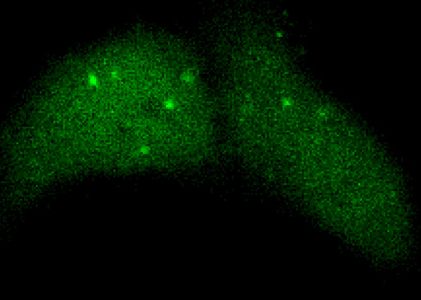
Active molecules, peptides and drugs often cross
many physiological barriers before they reach the site of action, while the
most important barrier is the cell membrane. The problem of cytotoxicity of
nano-objects and drug delivery through the cell membrane require a deep
understanding of principles of their interaction with cell membranes. However,
the molecular mechanisms of how these nano-objects disrupt or insert into the
membrane contain many open questions.
The field of drug delivery and controlled release is a multidisciplinary research area demanding close cooperation between researchers with different backgrounds.
The support of this site is discontinued. Follow this link to the new site:
Soft matter and Biophysics research teams
We aim to understand the interactions of lipid membranes with nano-objects including nano-particles, nanotubes, polymers, polymeric micelles and polymer therapeutic complexes/conjugates.Theory Single Chain Mean Field (SCMF) theory is one of the tools of the Molecular Simulation group, URV, Tarragona. The SCMF theory is used to model phospholipid bilayers and interaction of nanoparticles with bilayers. Equilibrium structures and the energy of insertion to the bilayer can be found as a result of minimization of equations.
Contact: Vladimir Baulin Monte Carlo simulations using the Bond Fluctuation Model, exploited at Leibniz-Institut für Polymerforschung Dresden. It allows to simulate efficiently polymer structures of high connectivity, yielding their universal static and dynamic properties. Contact: Jens-Uwe Sommer (read more) |
Experiment Neutron reflection from artificial lipid bilayers and spectroscopic ellipsometry (SE) applied in Biological Physics group, Manchester. Neutron reflection gives direct access to detailed microscopic information about the structure of the phospholipid bilayers as well as the their interactions with nano-objects at molecular and cellular levels from various biointerfacial processes.
Contact: Jian Lu (read more) Transduction of nucleotides, proteins and small molecules into cells for pharmaceutical purposes, or imaging agents to monitor drug trafficking is done by BioScience Engineering Group, Cambridge. Fluorescence lifetime imaging microscopy (FLIM) in combination with laser scanning confocal microscopy is used to study the cellular uptake behavior.
Contact: Nigel K.H. Slater (read more) Electrophysiological experiments on biological membranes in the Membrane Biophysics Group, Copenhagen have objective to detect and characterize the pores in the membranes arising spontaneously or induced by incorporated nano-objects. The measurements focus on calorimetric profiles of membranes with and without proteins, and thermodynamic analysis of heat capacities in order to investigate the influence of proteins on the phase behaviour of lipid membranes.
Contact: Thomas Heimburg (read more) Preparation and manipulation of giant unilamellar vesicles that are then observed by means of optical microscopy is done in the Membranes and Microforces Mcube group, Strasbourg. A full range of optical microscopy techniques are available including confocal fluorescence, microscopy epi-fluorescence, phase contrast, reflection interference contrast microscopy, and some other optical techniques. Electroformation for giant vesicles, liposomes by sonication or extrusion, and supported bilayers by Langmuir transfer or liposome fusion provides for a range of bilayer architectures.
Contact: Carlos Marques (read more) |
Synthesis Synthesis and characterization of polymers, polymeric micelles, functionalized CNTs, nanoparticles and therapeutics interacting with phospholipid layers is done by Biomedical and Health Research Centre, Leeds.
Contact: Rongjun Chen (read more) |







